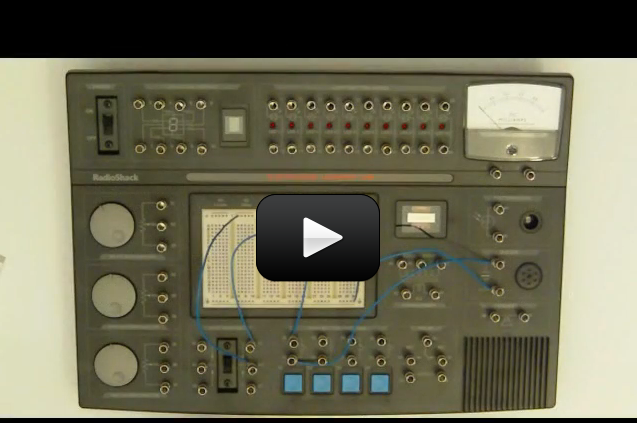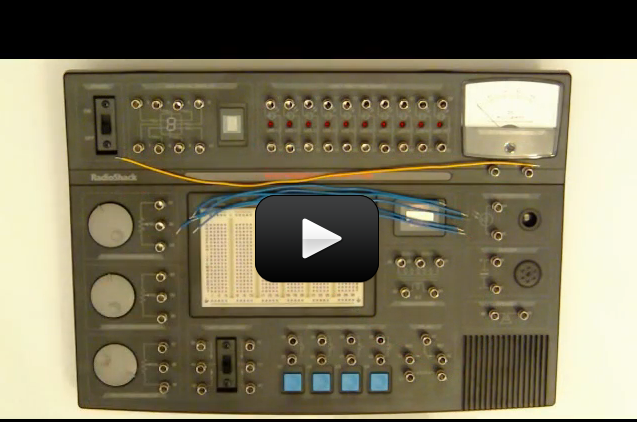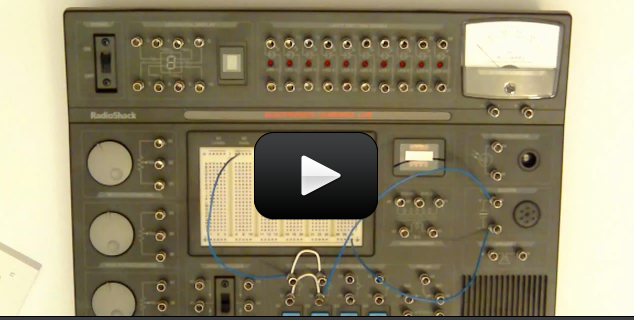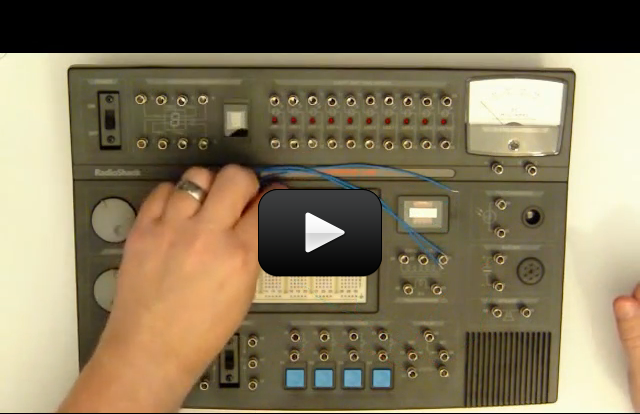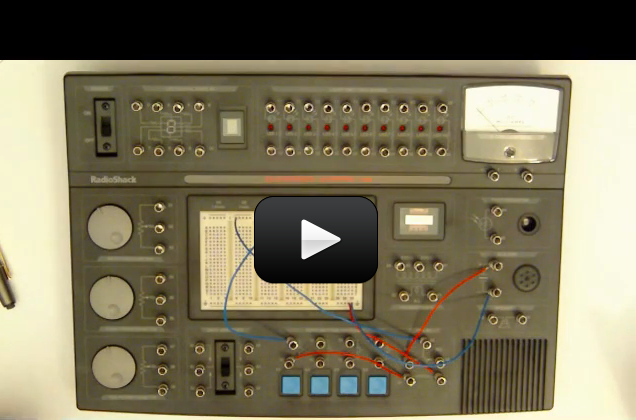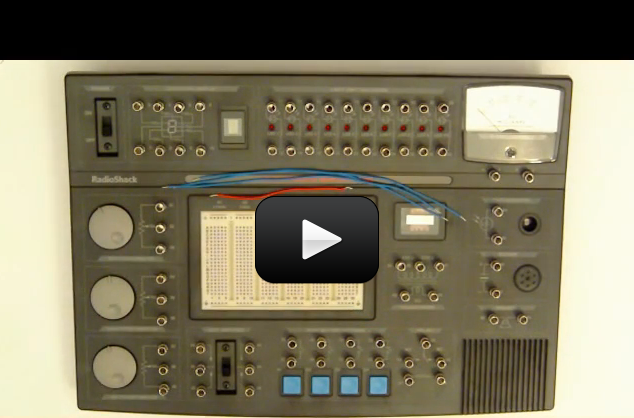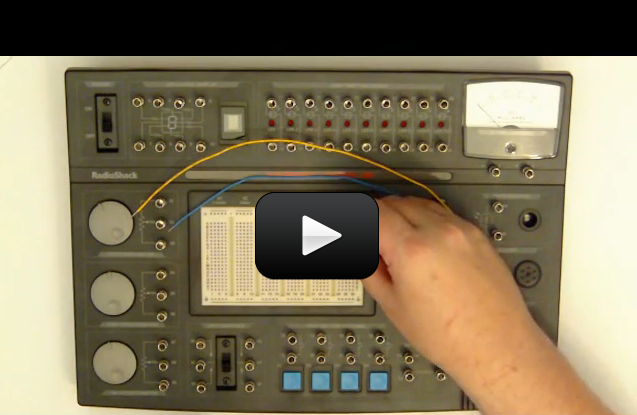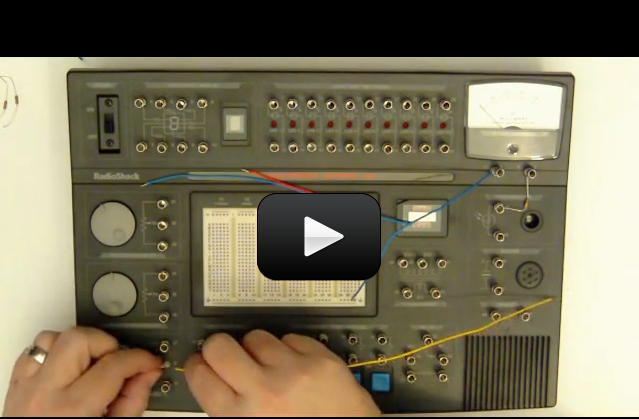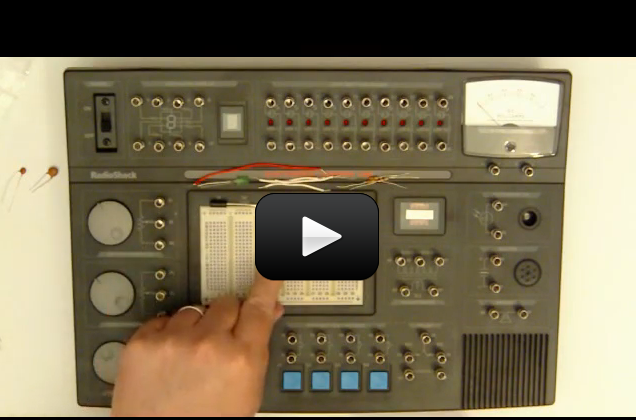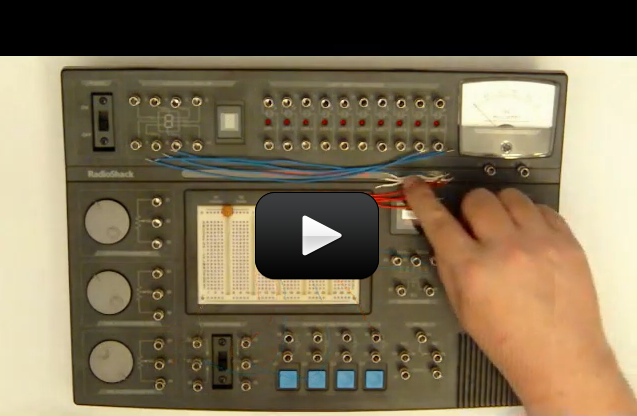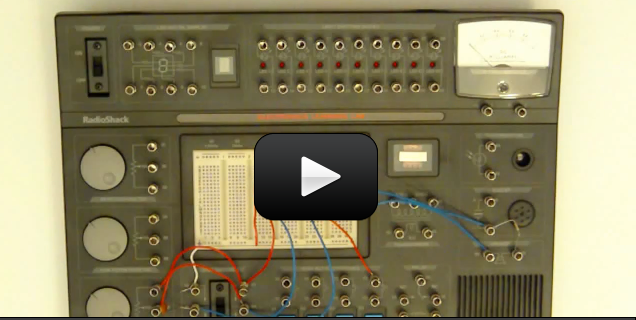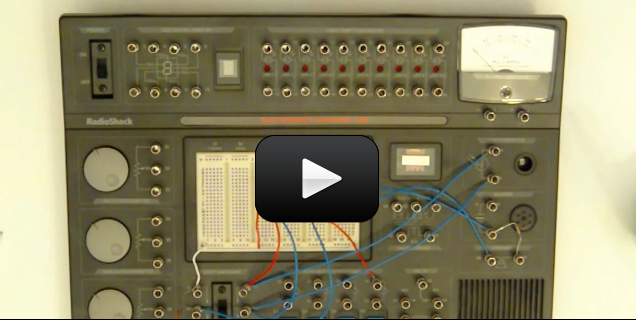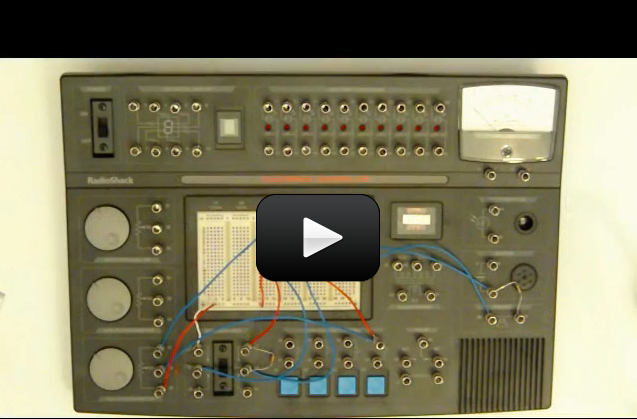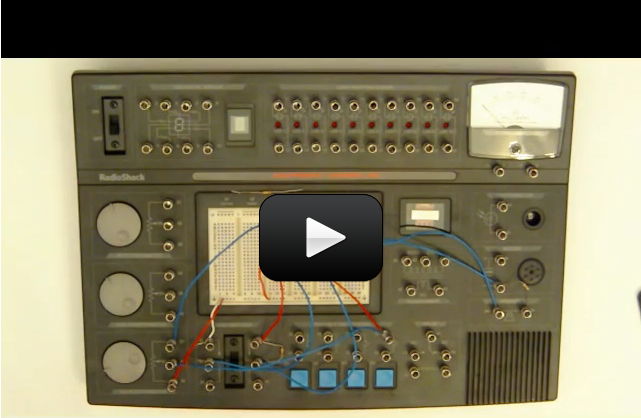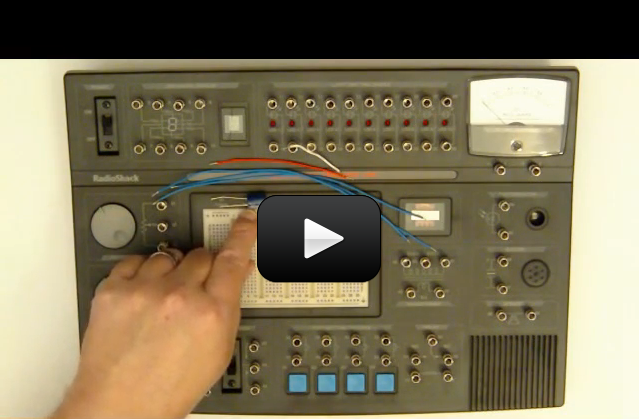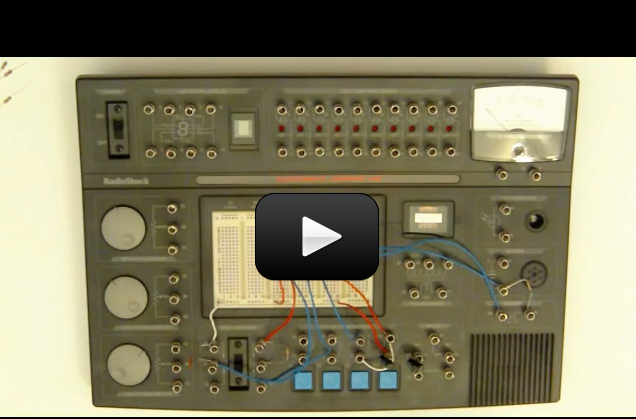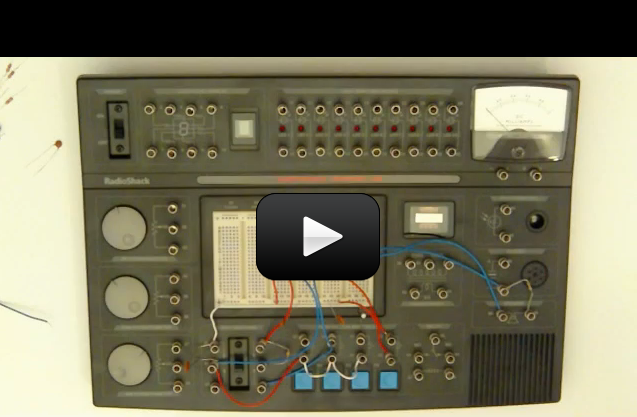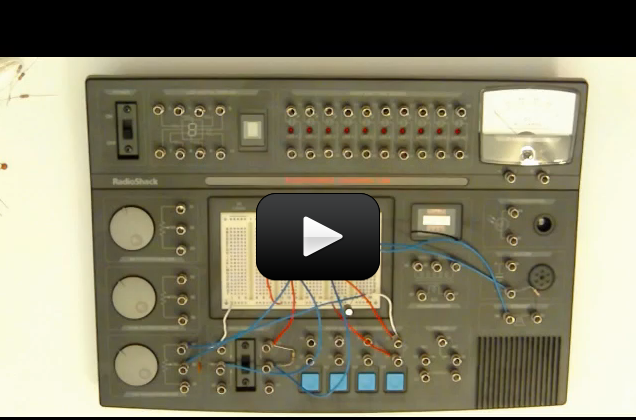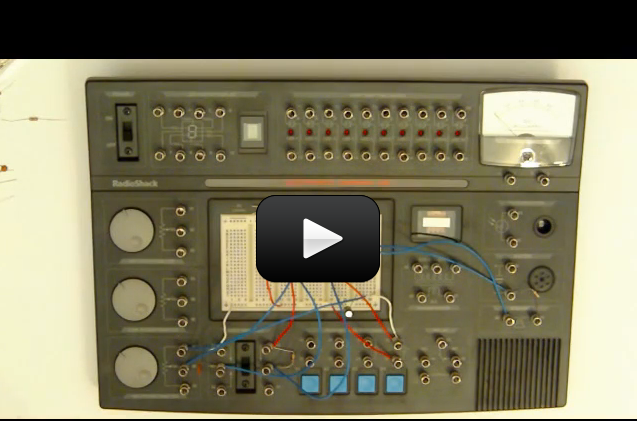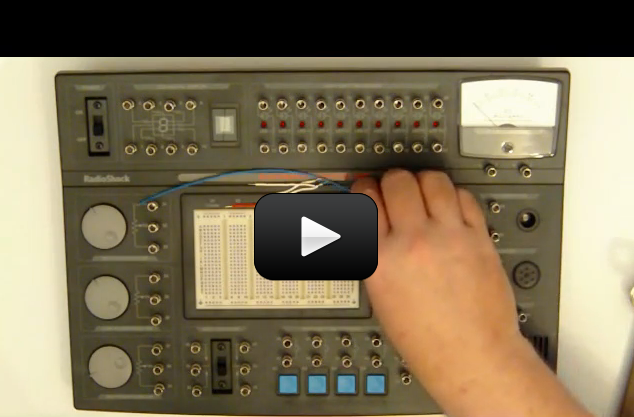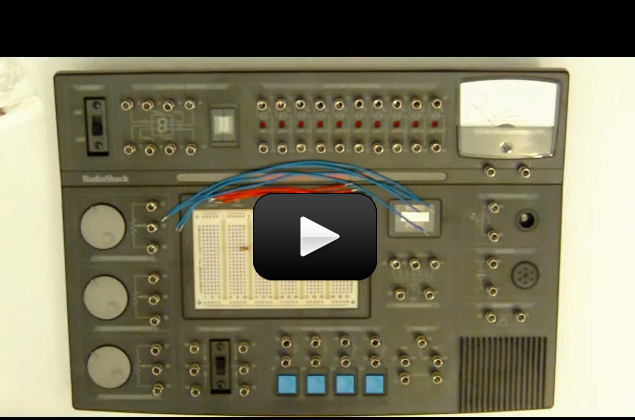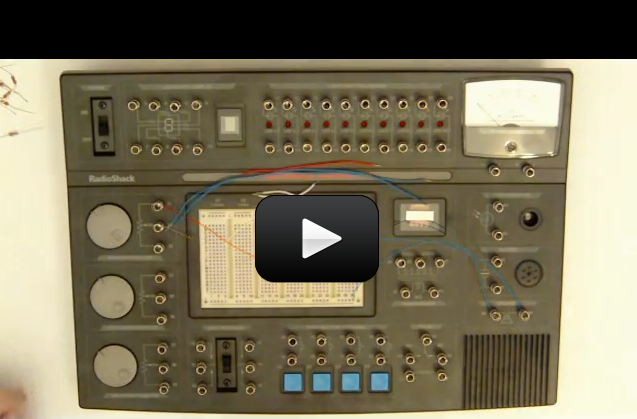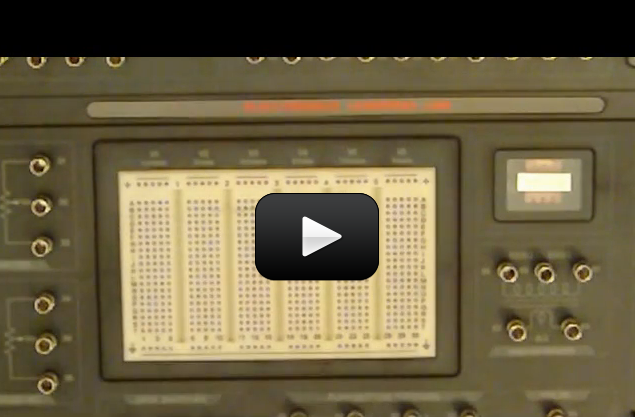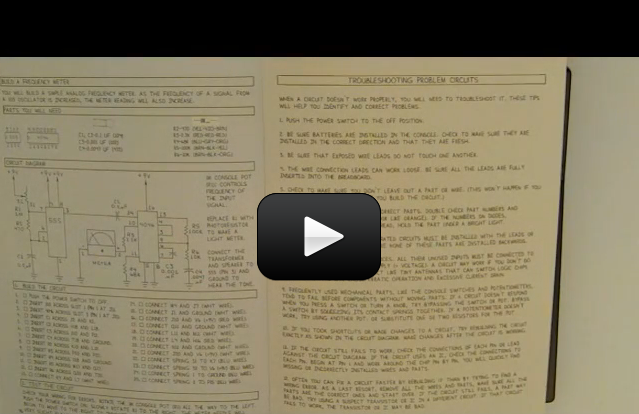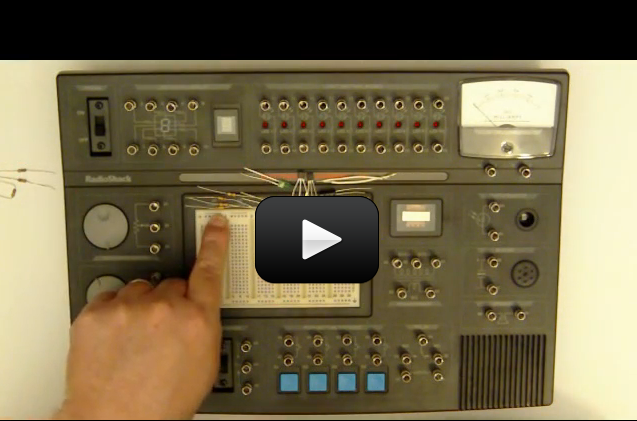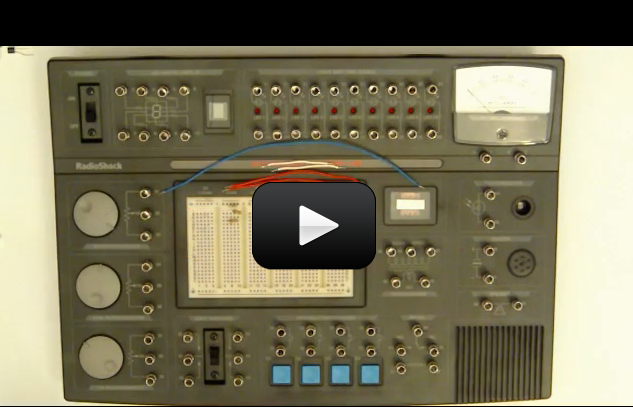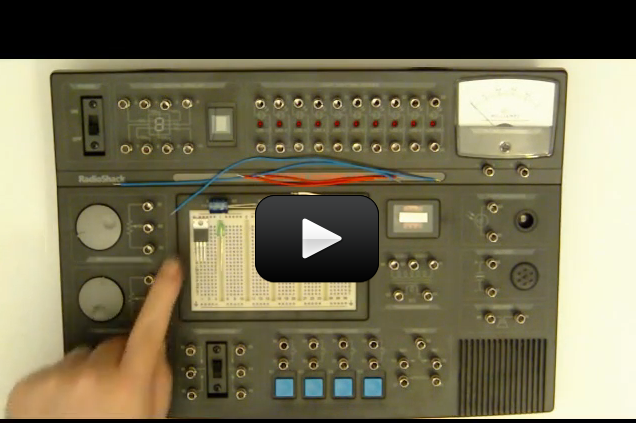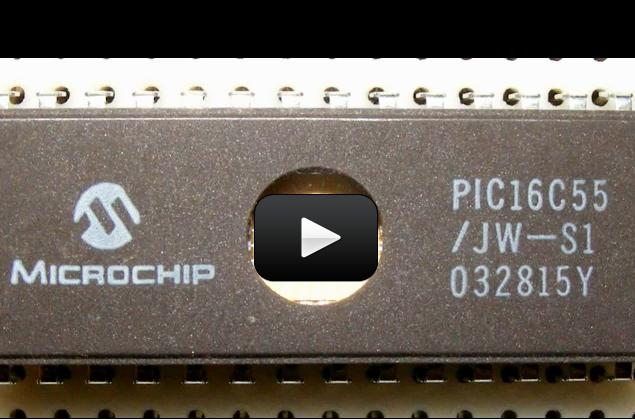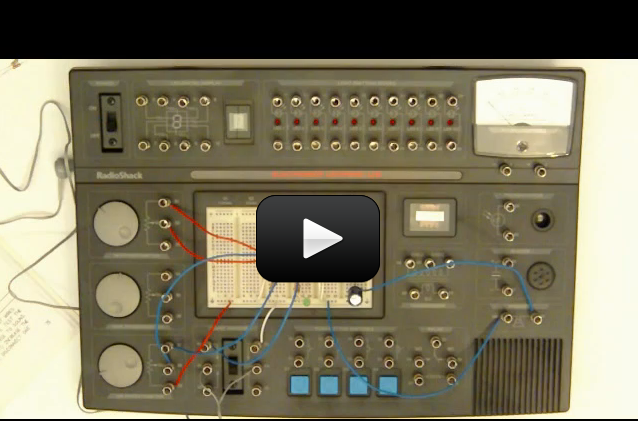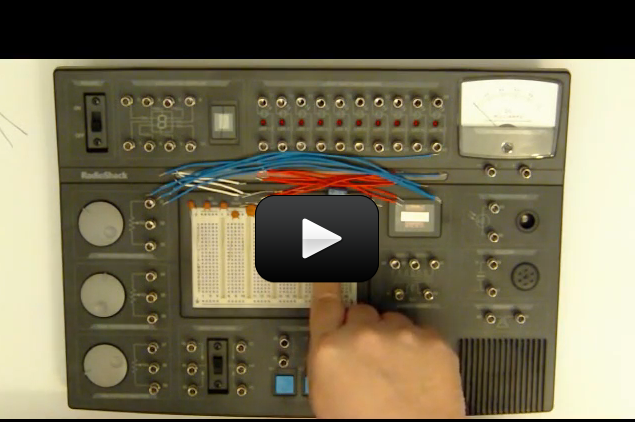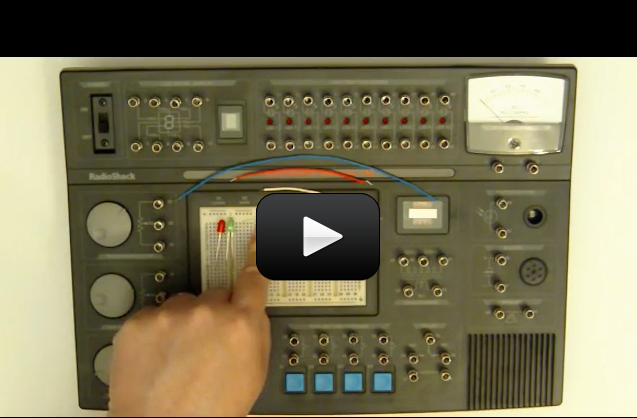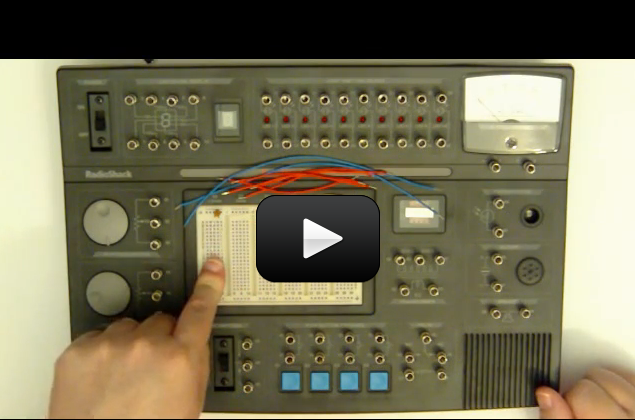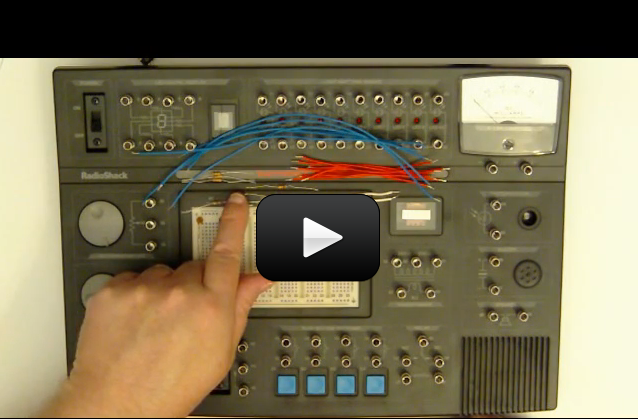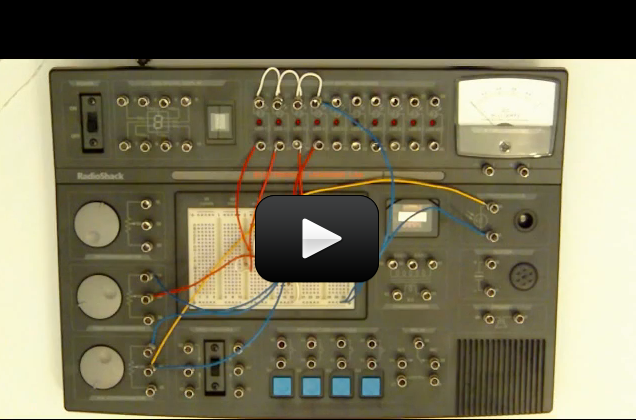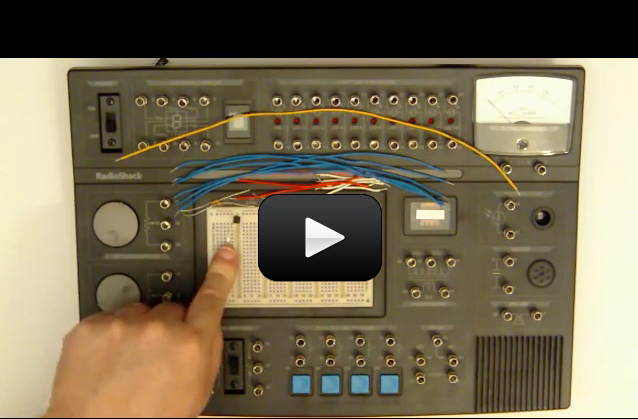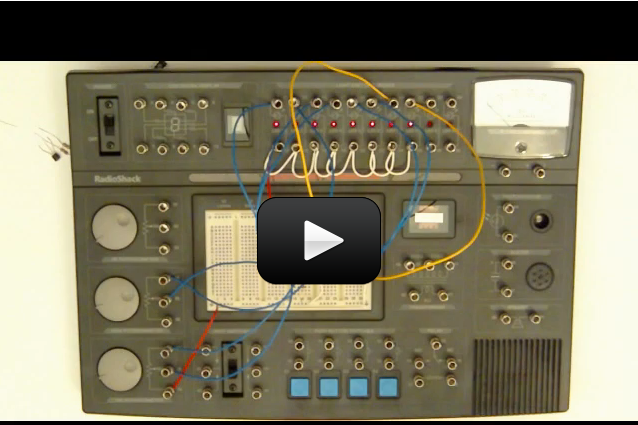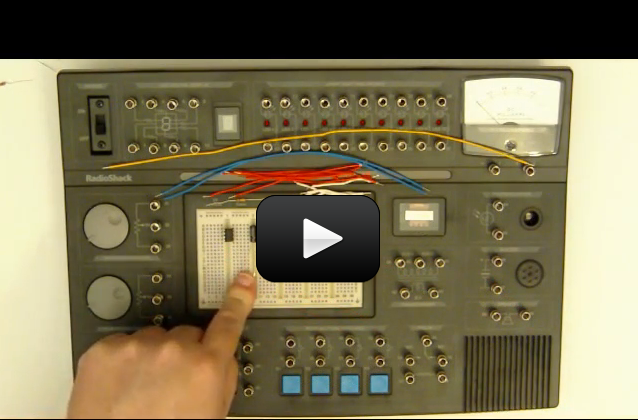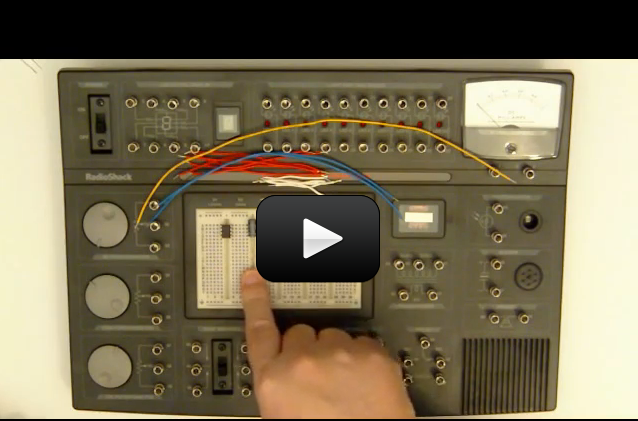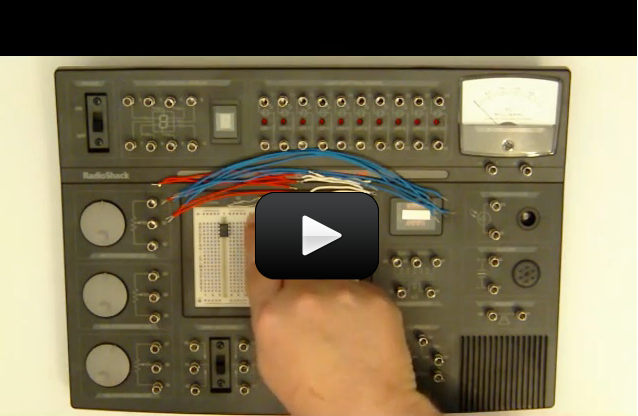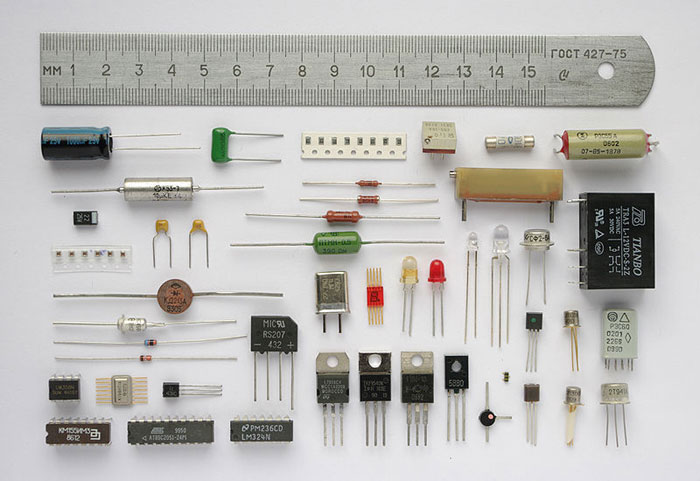Let’s see how you did! If you didn’t get a few of these, don’t let it stress you out – it just means you need to play with more experiments in this area. We’re all works in progress, and we have our entire lifetime to puzzle together the mysteries of the universe!
Answers:
[am4show have=’p9;p51;’ guest_error=’Guest error message’ user_error=’User error message’ ]
1. What is a momentary contact switch?
A switch that is only closed while being pressed.
2. What is an LED?
A diode that emits light.
3. What is a piezo buzzer?
A buzzer that converts electricity into sound.
4. What is a relay?
A device that turns on a secondary circuit when the primary circuits activates the relay.
5. What is a meter?
A device that is used to display electrical information so people can visualize the information.
6. What is a potentiometer?
An electrical device that can either divide a voltage and produce a variable voltage output or act as a variable resistor.
7. What is a photoresistor?
A photoresistor that varies its internal resistance based on the amount of light hitting the photoresistor’s sensor.
8. What is a 555 timer?
A integrated circuit that can be configured to produce a wide range of output frequencies.
9. Using the formula R = V / I calculate the resistance value of a circuit with 12 volts and 1 amp of current.
We know that the voltage is 12 volts and the current is 1 amp. So we divide 12 by 1 and that gives us the answer: 12. So the resistance is 12 Ohms. (12 = 12 / 1)
10. Using the formula I = V / R, calculate the current a circuit is using with 12 volts and 100 ohms of resistance.
We know that the voltage is 12 volts and the resistance is 100 ohms, so we divide 12 by 100 and that gives us the answer: 0.12, so the current is 0.12 Amps (0.12 = 12 / 100)
11. Using the formula E = I * R, calculate the voltage of a circuit that has a resistance of 100 ohms and is using 150 milliamps of current.
We know that the current is .15 amps and the resistance is 100 ohms. So we multiply .15 times 100 and that gives us the answer: 15, so the voltage is 15 volts (15 = .15 / 100)
12. What happens if we connect an LED’s anode to ground and the cathode to positive voltage?
Nothing, the LED will block the flow of current and it will remain off.
13. Why do we use a transformer in the audio experiments using the speaker?
To protect the circuit from excessive current draw, which can and probably will damage components.
14. What is a voltage divider?
A circuit that uses an electronic component (Resistors, Diodes, LEDs) to divide a voltage to a safe level for more sensitive electronic components.
15. What is a seven segment display?
A display that uses 7 LEDs to represent numbers and letters that people can understand.
16. What are the two types of transistors?
NPN (Negative-Positive-Negative) and PNP (Positive-Negative-Positive)
17. Why do we use transistors in electronics?
To protect low current circuits from other circuits that need higher current to operate. And also to amplify signals for devices that need higher strength to operate properly.
18. What is a voltage regulator?
A integrated circuit that takes a higher voltage and reduces it to a set lower voltage. The 7805 voltage regulator in your kit provides a constant 5 volts output from a source voltage of 6 volts to as high as 35 volts.
19. What is the full name of an Op-Amp?
Operational Amplifier
20. What does an Op-Amp do?
Amplifies an input signal for a electronic device or circuit that requires more power.
21. What is a bargraph?
A group of LEDs that are tied together to represent electrical information visually.
[/am4show]

